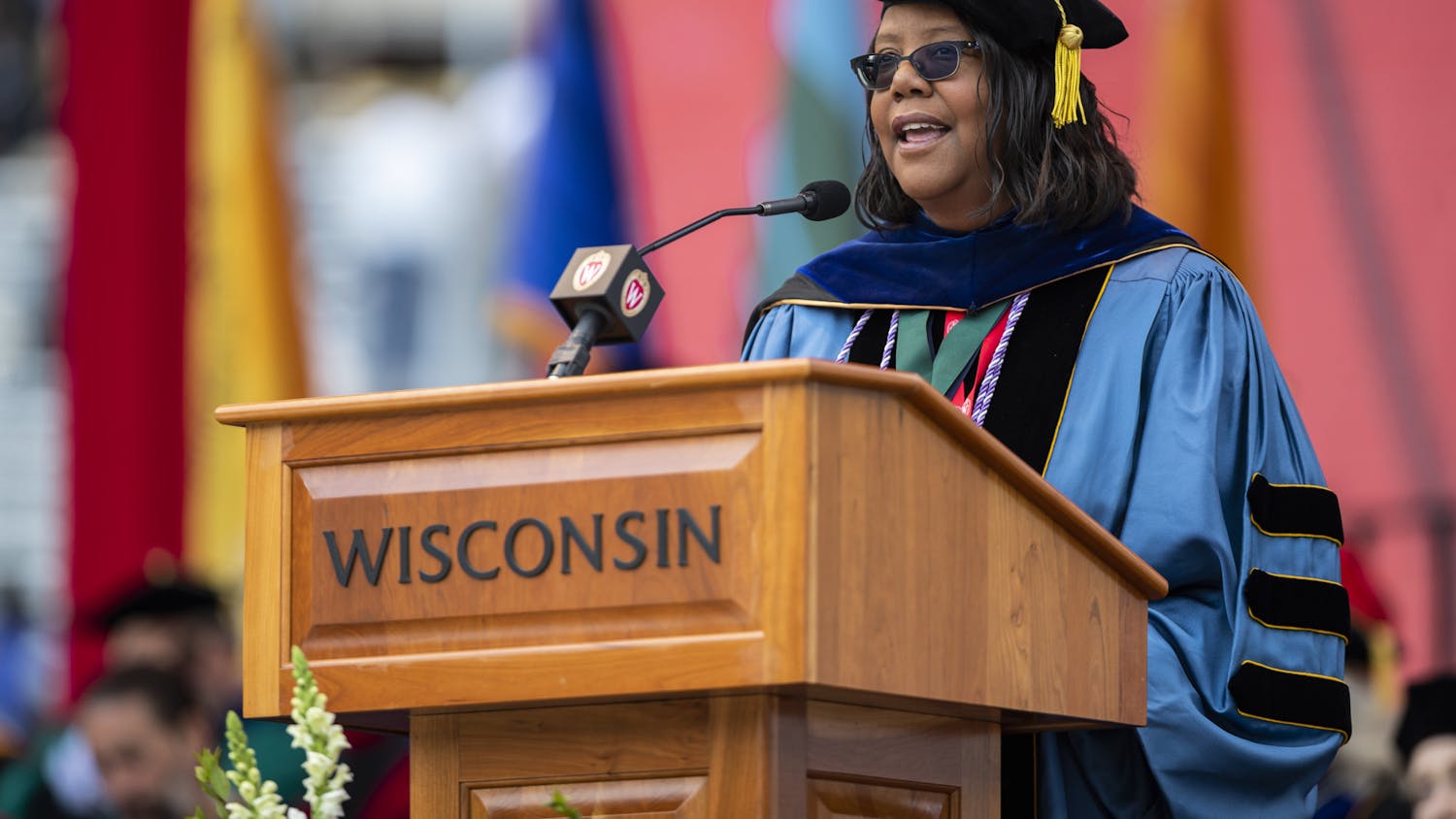The term \auteur"" is thrown around a lot these days. As soon as a director presides dictatorially over a few films, some want to assign them auteurship whether their vision was unique or not. Creative filmmakers abound, but few develop a style that is totally unlike any other's. Darren Aronofsky is one of these few.
Aronofsky's first film, 1998's ""Pi,"" set a new standard for micro-budget sci-fi, taking advantage of its meager production values to create a raw depiction of how important, and terrifying, numbers can be. He followed in 2000 with the heart-breaking addiction saga ""Requiem for a Dream."" What tied these films together was Aronofsky's personal stamp of extreme close-ups, techno music and what he calls ""hip-hop montages""—super-quick cuts of sequences of images, repeated throughout to hammer their points into the viewer's brain.
His new film, ""The Fountain,"" works something like one single, slowed-down hip-hop montage. Its subject matter and plot aren't as complex as those of ""Pi"" or ""Requiem for a Dream,"" but its presentation certainly is.
In this symbolism-laden film, Hugh Jackman plays Tom (as in, ""ground control to..."") Creo (as in, ""I believe"" or ""I create""). The film jumps around three different time periods and settings—Inquisition-era Spain and Spanish Central America, a contemporary city and hurtling through nebulae in the future—and Jackman, or at least his soul, is present in all of them. So is his lover who ""pulled [him] through time,"" Rachel Weisz.
In the past, Jackman is a shaggy-bearded conquistador looking in Mayan lands for the Tree of Life (read: Fountain of Youth), and Weisz is the Spanish queen; in the present, Jackman is a scientist feverishly working on a cure for cancer while Weisz is being slowly killed by it and writing a book called, not coincidentally, ""The Fountain.""; In the future, a Maynard James Keenan-looking Jackman does yoga inside a giant snow globe spaceship on its way to what's believed to be the true Eden while Weisz's soul, manifested in a tree, summons images of her other two incarnations.
Got all that? It doesn't matter if you don't, because while ""The Fountain's"" ideas are majestic, they're also surprisingly simple. Since the narrative jumps between the three time periods, none of which are told chronologically, this isn't the easiest film to follow. But Aronofsky can be forgiven for not quite explaining how each one connects to the other, as the ultimate point about whether it's a good idea to try to live forever should be clear to anyone who's read ""Tuck Everlasting"" from the get-go.
While the moral of ""The Fountain"" is obvious, its resolution isn't, and Aronofsky does a fine job of making it interesting to get there. While some of his scenes plunge into silliness—one imagines Aronofsky approaching a storyboard like a Las Vegas architect, going back to the drawing board if something isn't far-fetched enough—his ambitiousness pays off more than a few times.
The most remarkable thing about this film's imagery is that nearly all of it was achieved without computer graphics. Aronofsky utilized macro photography—the process of filming chemical reactions and other infinitesimal things—to generate his images of, among other things, the vast expanse of space. It's philosophically fascinating, but also an ingeniously successful attempt to inject some organicalness where computers never could. Every spinning, pulsating celestial body moves like the real thing it is.
""The Fountain"" is a film that tries to say something grand about the eternalness of the human spirit and succeeds insomuch that its message is the only one you'd want to hear: As it turns out, it's pretty darn eternal. Playing with an idea so huge, intrinsic and obvious doesn't write a good movie on its own, but Aronofsky has many times over more talent than it takes to make this straightforward idea work. ""The Fountain"" is a worthwhile film that will have a deserved place in the auteur Aronofsky's oeuvre, but it's clear that he's capable of much, much more.





